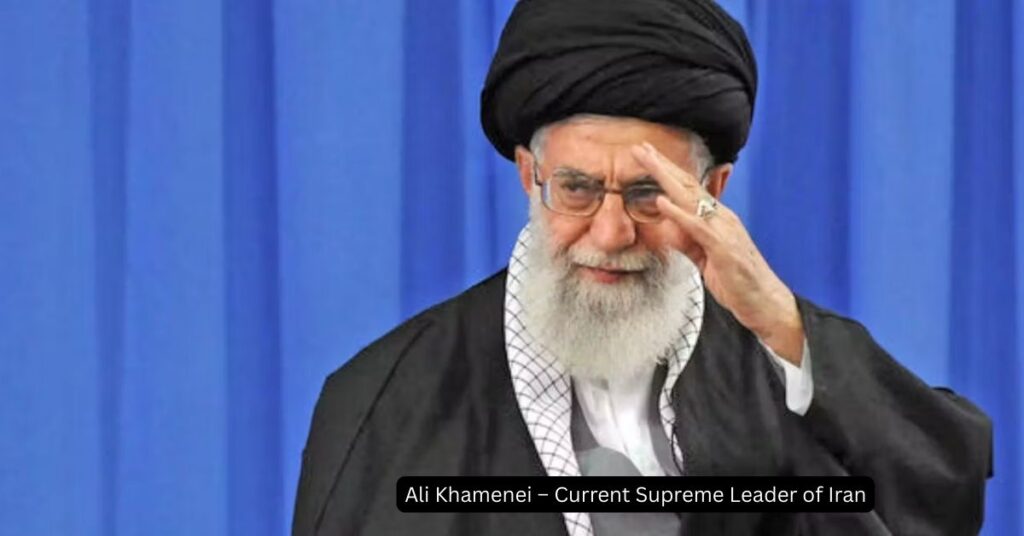Ali Khamenei, born on July 17, 1939, in Mashhad, Iran, is the current Supreme Leader of Iran, a position he has held since June 4, 1989. He succeeded Ayatollah Ruhollah Khomeini, the founder of the Islamic Republic, and has since become one of the most influential political and religious figures in the Middle East. As Supreme Leader, Khamenei holds the highest authority in Iran, overseeing the executive, legislative, and judicial branches, as well as the military and media.
Early Life and Education
Ali Hosseini Khamenei was born into a religious family and pursued Islamic studies from a young age. He studied under prominent clerics in Qom and Mashhad, including Khomeini himself. His early exposure to religious teachings and revolutionary ideologies shaped his future role in Iran’s political transformation.
Role in the Iranian Revolution
Khamenei was an active figure in the 1979 Iranian Revolution, which overthrew the monarchy of Shah Mohammad Reza Pahlavi. As a close ally of Khomeini, he played a vital role in organizing revolutionary movements, delivering speeches, and mobilizing the public. Following the revolution, he held several important positions in the newly established Islamic Republic.
Political Career Before Becoming Supreme Leader
Before being appointed as Supreme Leader, Khamenei served as:
- President of Iran (1981–1989): After the assassination of President Mohammad Ali Rajai, Khamenei was elected president, serving two consecutive terms.
- Member of Parliament (Majlis): He contributed to shaping Iran’s political landscape during the formative years of the Islamic Republic.
- Religious Leader and Cleric: His deep religious background and loyalty to Khomeini made him a prominent figure among the ruling clerics.
Appointment as Supreme Leader
When Ayatollah Khomeini passed away in 1989, Ali Khamenei was chosen by the Assembly of Experts to become Iran’s new Supreme Leader. Though not a marjaʿ (the highest-ranking cleric in Shia Islam) at the time, his political experience and revolutionary credentials secured him the position.
Powers and Responsibilities
As Supreme Leader, Ali Khamenei wields vast authority, including:
- Command over the Armed Forces and the Revolutionary Guards (IRGC)
- Control over state media and judiciary
- Approval of presidential candidates and validation of election results
- Oversight of foreign policy and nuclear strategy
This centralized power makes him the most significant figure in Iran’s political system.
Domestic and International Influence
Domestically, Khamenei has maintained a strong grip on Iran’s political institutions, balancing between conservative and reformist factions. His leadership has emphasized preserving Islamic values, national independence, and resistance to Western influence.
Internationally, Khamenei is known for his anti-U.S. and anti-Israel stance. He has been a central figure in shaping Iran’s foreign policy, particularly its support for regional groups such as Hezbollah and its role in Middle Eastern conflicts.
Challenges During His Leadership
Khamenei’s tenure has faced multiple challenges, including:
- Economic sanctions imposed by the United States and international community over Iran’s nuclear program
- Domestic protests calling for political and social reforms
- Tensions with Western powers, especially regarding Iran’s influence in the Middle East
Despite these challenges, he has managed to maintain authority and influence both at home and abroad.
Legacy and Impact
Ali Khamenei’s leadership has left a profound impact on Iran’s political, religious, and cultural identity. Supporters see him as a defender of Islamic values and independence, while critics argue that his rule limits democratic freedoms and suppresses dissent.
Regardless of perspective, his role as the current Supreme Leader of Iran places him at the center of global discussions about the Middle East, Islamic governance, and international diplomacy.




